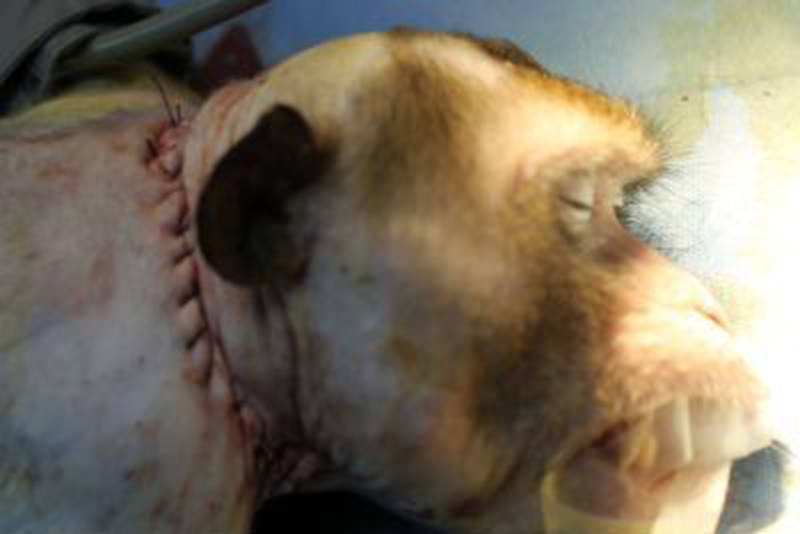http://www.theguardian.com/film/2016/jan/28/virtual-reality-immersive-film-making-wowing-sundance

WHO
among us hasn’t wanted to let go of anxiety or forget about fear?
Phobias, panic attacks and disorders like post-traumatic stress are
extremely common: 29 percent of American adults will suffer from anxiety
at some point in their lives.
Sitting
at the heart of much anxiety and fear is emotional memory — all the
associations that you have between various stimuli and experiences and
your emotional response to them. Whether it’s the fear of being
embarrassed while talking to strangers (typical of social phobia) or the
dread of being attacked while walking down a dark street after you’ve
been assaulted (a symptom of PTSD), you have learned that a previously
harmless situation predicts something dangerous.
It
has been an article of faith in neuroscience and psychiatry that, once
formed, emotional memories are permanent. Afraid of heights or spiders?
The best we could do was to get you to tolerate them, but we could never
really rid you of your initial fear. Or so the thinking has gone.
The
current standard of treatment for such phobias revolves around exposure
therapy. This involves repeatedly presenting the feared object or
frightening memory in a safe setting, so that the patient acquires a new
safe memory that resides in his brain alongside the bad memory. As long
as the new memory has the upper hand, his fear is suppressed. But if he
is re-traumatized or re-exposed with sufficient intensity to the
original experience, his old fear will awaken with a vengeance.
This
is one of the limitations of exposure therapy, along with the fact that
it generally works in only about half of the PTSD patients who try it.
Many also find it upsetting or intolerable to relive memories of
assaults and other traumatizing experiences.
We
urgently need more effective treatments for anxiety disorders. What if
we could do better than creating a new safe memory — and actually get
rid of emotions attached to the old bad one?
New
research suggests that it may be possible not just to change certain
types of emotional memories, but even to erase them. We’ve learned that
memories are uniquely vulnerable to alteration at two points: when we
first lay them down, and later, when we retrieve them.
Merel
Kindt, a professor of psychology at the University of Amsterdam, and
her colleagues have seemingly erased the emotional fear response in
healthy people with arachnophobia. For a study published last month in the journal Biological Psychiatry,
she compared three groups made up of 45 subjects in total. One group
was exposed to a tarantula in a glass jar for two minutes, and then
given a beta-blocker called propranolol that is commonly prescribed to
patients for performance anxiety; one was exposed to the tarantula and
given a placebo; and one was just given propranolol without being shown
the spider, to rule out the possibility that propranolol by itself could
decrease spider fear.

Dr.
Kindt assessed the subjects’ anxiety when they were shown the spider
the first time, then again three months later, and finally after a year.
What she found was remarkable. Those who got the propranolol alone and
those who got the placebo had no improvement in their anxiety. But the
arachnophobes who were exposed to the spider and given the drug were
able to touch the tarantula within days and, by three months, many felt
comfortable holding the spider with their bare hands. Their fear did not
return even at the end of one year.
How
does this work? Well, propranolol blocks the effects of norepinephrine
in the brain. This chemical, which is similar to adrenaline, enhances
learning, so blocking it disrupts the way a memory is put back in
storage after it is retrieved — a process called reconsolidation.
Arachnophobes
have an emotional memory that involves an association between spiders
and a dreaded outcome, like a spider bite. This “fear memory” is the
source of their phobia — even if (as is often the case) it never
actually happened. The basic idea is that when Dr. Kindt briefly exposed
the subjects to the spider, she reactivated their fear, which made the
fear memory susceptible to the influence of propranolol.
Reconsolidation
is a bit like pulling up a file on your computer, rewriting the same
material in a bigger, bolder font and saving it again. Disrupting
reconsolidation with propranolol or another drug is akin to retrieving
this document, erasing some or all of the text and then writing
something new in its place.
Dr.
Kindt is not the first to demonstrate that disrupting reconsolidation
can weaken or erase emotional memories. Several studies of rats done in
2000 showed that a drug called anisomycin, which blocks the synthesis of
proteins in the brain, could reduce fear associations. In one,
researchers taught rats to fear a sound by pairing it with a shock.
After the animals were fear-conditioned, they were presented with the
sound and then immediately given the drug. When the animals were exposed
to the sound again, they no longer appeared afraid; they had forgotten
their original fear.
Curiously,
there is a very narrow time window after retrieving a fear memory when
you can disrupt that memory — hours, in the animal studies — before it
closes and the drug has no effect.
These
studies suggest that someday, a single dose of a drug, combined with
exposure to your fear at the right moment, could free you of that fear
forever. But there’s a flip side to this story about how to undo
emotional learning: how to strengthen it. We can do that with drugs as
well, and may have been doing it for some time.
ANXIETY
enhances emotional memory. We all know that — it’s why you can easily
forget where you put your wallet, but will never forget being attacked.
This is the case because anxiety leads to the release of norepinephrine
in the brain, which, again, strengthens emotional learning. It is also
why we should think twice about casually prescribing stimulants like
Ritalin and Adderall for young people who really don’t need them.
Stimulants also cause the release of norepinephrine and may enhance fear
learning. So it is possible that taking stimulants could increase one’s
risk of developing PTSD when exposed to trauma.
Indeed,
a study that will be published next month found that the escalating use
of stimulants by the military in active duty soldiers, including those
serving in Iraq and Afghanistan, was strongly correlated with an
increase in the rates of PTSD, even when controlling for other factors,
like the rate of attention deficit hyperactivity disorder. The study
examined the use of prescription stimulants, like Ritalin and Adderall,
and the rates of PTSD in nearly 26,000 military service members between
2001 and 2008, and found that the incidence of PTSD increased along with
the prescriptions.
By
blocking the effect of norepinephrine and disrupting memory
reconsolidation, we could perhaps reverse this process. The clear
implication of these studies is that emotional memory is not permanent
after all.
Before
you rush off into a panic about the dystopian possibility of mind
control or memory deletion, it’s important to recognize that the
procedure in Dr. Kindt’s study only weakened the subjects’ fear memory
and avoidant behavior. Although the procedure is able to alter or
perhaps delete the fear memory (something exposure therapy cannot do),
it does nothing to the factual, or biographical, memory, which remains
intact.
This
is not “Eternal Sunshine of the Spotless Mind,” the movie in which a
dysfunctional couple decides to erase their memories of each other and
start their lives all over again. To the contrary, you still remember
your biography, but your fear would be stripped of its force. The
subjects knew perfectly well after the study that they previously feared
spiders and that they now — strangely — felt little to no anxiety
around them.





